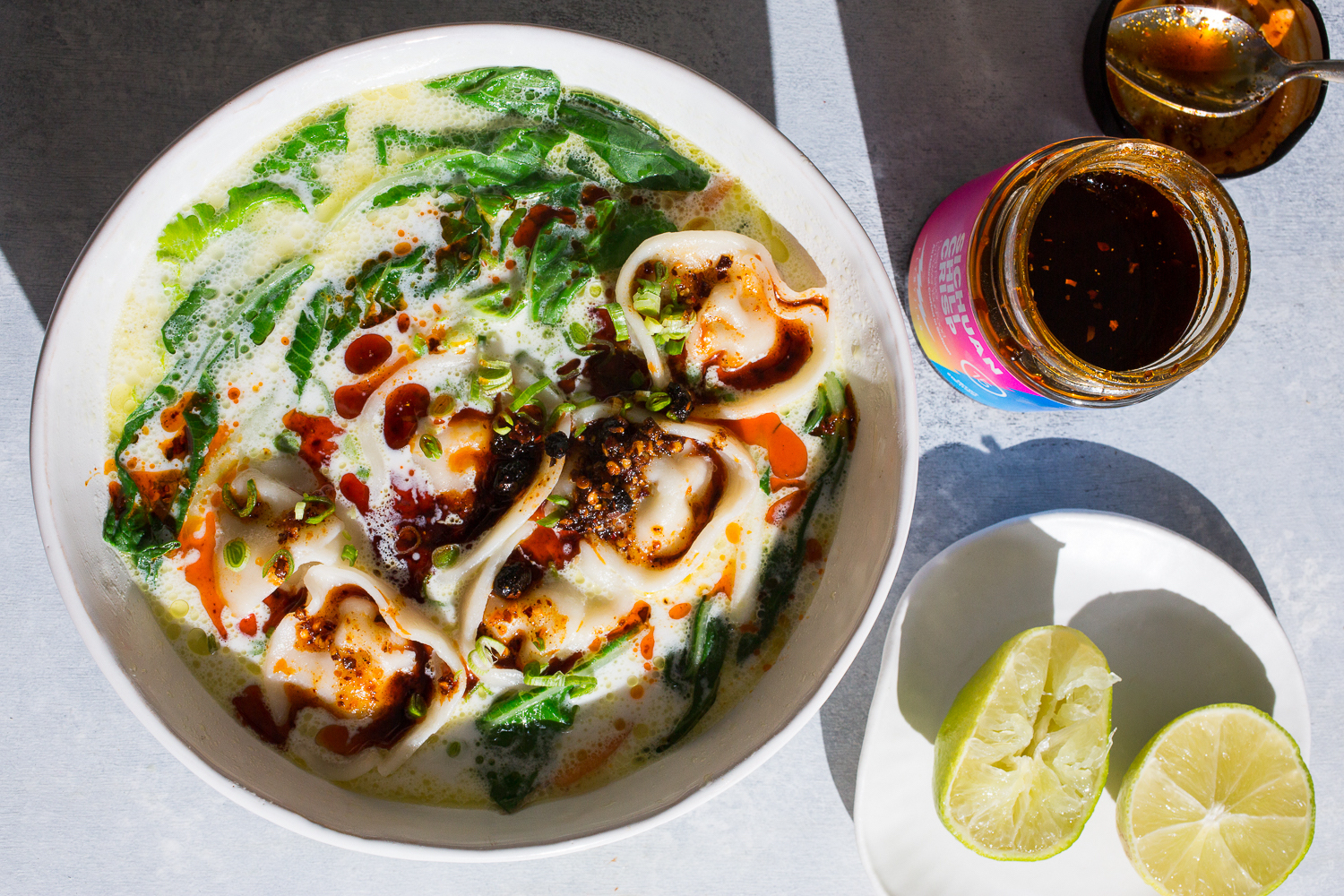

Every day at lunch, a line forms outside of the restaurant locations with foodies seeking specialty dishes like spicy cumin lamb burgers and hand-ripped noodles. Xi'an Famous Foods is a family-run fast-casual chain in New York City. But at times, people raised their eyebrows at the price tag - $15 per jar - compared to several dollars for a jar of Lao Gan Ma at Asian grocery stores. "Even the same ingredients but different grades will produce remarkably different results," she said.

Gao described her chili crisp as aromatic with a layered umami flavor and "a bit of a funk" from the fermented black beans. It also uses gongjiao, or tribute pepper, a rare and premium delicacy that was sent to the emperor as a tribute. The Fly By Jing chili crisp features a mix of three chilis with different heat levels. She had spent years sourcing quality ingredients from her hometown, Chengdu, Sichuan's capital city that's been recognized by UNESCO as a cradle of gastronomy. In 2018, Jing Gao, the founder of Fly By Jing, launched her Sichuan chili crisp through a viral Kickstarter campaign.

"It's very hard for us to mark things up even though it's pretty labor-intensive." But the false stereotype of Chinese cuisine as cheap and monolithic has made it challenging to innovate and charge customers a fairer price. to create chili oil that best represents their respective cultures. This search for nostalgia and diverse flavors has spurred young chefs in the U.S. Xi'an Famous Foods' spicy and sour pork dumplings in chili oil. "We initially catered towards the immigrant population, the same type of people like my father who wanted to have hometown cooking," Wang said. These newcomers have "set the bar higher" for restauranteurs, he said. has also sparked an evolution of Chinese cuisine, expanding from a slim selection of staples like General Tso Chicken to a proliferation of specialized, regional delicacies. An influx of high-income Chinese workers and international students in the U.S. The chili oil at Wang's restaurant, which is still prepared by his father alone, boasts a soft yet fragrant type of spiciness that's in line with the taste profile of Xi'an, his hometown.Ĭhili oil has gained so much attention thanks to those who share recipes online and make ingredients more accessible, Wang explained. He added that, unlike Lao Gan Ma's savory sauce, most chili oils are not seasoned with salt. "It's like pesto: you could buy pesto, but for good pesto, you'd probably just make it from scratch." "It's a really simple thing to make, but people really mythicize it when they get a hold of these 'foreign' things." "There's a lot of hype around chili oil," said Jason Wang, the founder of Xi'an Famous Foods, a New York-based fast-casual chain that's known for its crowd-favorite chili oil. Unlike store-bought brands, every jar of fresh chili oil carries some form of family heritage and regional flavors. Staying true to our Cantonese roots, my brother uses dried shrimp and fried shallot in his chili oil while omitting the more common ingredients like star anise and cloves. Traditional Chinese chili oil is often homemade as most families have a unique, hand-me-down recipe. Her crispy chili oil became a crowd favorite and turned into a billion-dollar business. In the early 1990s, Tao ran a humble food stall in Guiyang, the capital city of Guizhou province. Most people would recognize a jar of Lao Gan Ma by the stern portrait of Tao Huabi, 74, the legendary godmother and founder of the brand. The British chef Alex Rushmer once professed, he could eat "a bowl of gravel" if it were smothered in Lao Gan Ma - a fragrant mixture of fermented soybeans, peanuts, fried garlic, and dried chili peppers doused in bright red oil. My friend admitted she would eat a spoonful of it straight out of the jar when she's desperate for spice. It adds the final, crunchy note that makes so many simple dishes whole, from dumplings and noodles to avocado toasts and even ice cream. Although the brand has a variety of flavors, the spicy chili crisp is among the most popular products in the West. Lao Gan Ma, China's "old godmother" chili sauce brand, in particular, has gained a cult following among foodies in the United States. Chili crisp has become a recent darling for American media outlets, with The New York Times, Bon Appetit, and others publishing glowing reviews and do-it-yourself recipes.


 0 kommentar(er)
0 kommentar(er)
